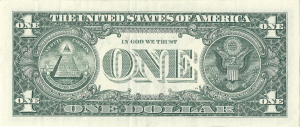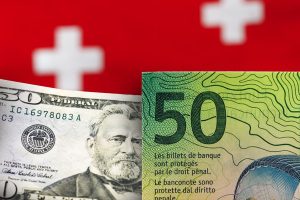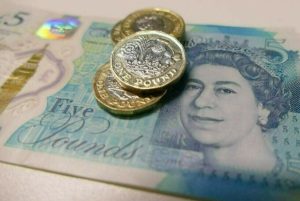DOLLAR SAGS AS OPTIMISM OVER US TRADE DEALS BOOSTS BETS ON FED EASING
The dollar slid on Monday against the yen and wallowed near its lowest in almost four years against the euro, as market optimism over U.S. trade deals bolstered bets for earlier interest rate cuts by the Federal Reserve. The dollar also languished near a four-year low against sterling and a trough of more than decade versus the Swiss franc after the White House neared a deal with China, while Canada scrapped a digital services tax to restart stalled talks. Both the yuan and Canadian dollar gained. Investors interpreted Fed Chair Jerome Powell’s testimony to U.S. Congress last week as dovish, after he said rate cuts were likely if inflation did not spike this summer because of tariffs. Bets for at least one quarter-point reduction by September have risen to 91.5%, CME Group’s FedWatch Tool shows, from about 83% a week earlier. The Fed’s rate-setting committee also meets next month but does not gather in August. “The market pricing implies a (September) cut as a slam dunk,” Chris Weston, head of research at Pepperstone, wrote in a client note. Friday’s monthly U.S. payrolls report is this week’s “marquee risk event”, Weston said, and the risk to the dollar “seems asymmetric, given the Fed’s reaction function is biased towards the timing of the next cut.” That meant the dollar was more likely to suffer a rout on weak numbers than rally on a hot outcome, he added. An additional weight on the dollar came from Donald Trump’s continued assault on Powell, after the U.S. president said on Friday he would “love” it if the Fed chief resigned before his term ended in May. Trump also said he wanted to cut the benchmark rate to 1% from 4.25% to 4.5% now and reiterated that he planned to replace Powell with a more dovish Fed chairperson. Investors are also keeping an eye on Trump’s massive tax-cut and spending bill now facing the Senate, which could add $3.3 trillion to the national debt over a decade, the Congressional Budget Office has estimated. The dollar index, which measures the U.S. currency against six major counterparts, edged down 0.1% to 97.083, staying close to its more than three-year low of 96.933 late last week. The euro gained 0.1% to $1.1732, just off Friday’s level of $1.1754, its highest since September 2021. Sterling added 0.1% to $1.3732, hovering close to Thursday’s peak of $1.37701, unseen since October 2021. The dollar eased 0.1% to 0.7978 Swiss franc, after dipping on Friday to 0.7955 for the first time since January 2015, when the Swiss National Bank unexpectedly removed a cap on the currency’s value against the euro. The U.S. currency slumped 0.5% to 143.90 yen and tumbled 1.1% to 1,349.40 Korean won. On Friday, U.S. Treasury Secretary Scott Bessent said Washington and Beijing had resolved issues around shipments of Chinese rare earth minerals and magnets to the United States, further modifying a May deal in Geneva. He also said trade deals with other countries could be done by the U.S. Labor Day holiday on September 1, suggesting some wiggle room on Trump’s July 9 deadline to reach deals or face aggressive “reciprocal” tariffs.

DOLLAR PARES LOSSES AGAINST EURO AND SWISS FRANC AFTER BETTER-THAN-EXPECTED US JOBS DATA
The U.S. dollar gained ground against major currencies including the yen and the Swiss franc on Tuesday after data showed a better-than-expected increase in labor market demand, indicating the Federal Reserve will likely take its time to cut interest rates. The Republican-controlled U.S. Senate passed President Donald Trump’s tax and spending bill, approving a massive package that would enshrine many of his top priorities into law and add $3.3 trillion to the national debt. The bill will move to the House for final approval. Federal Reserve Chair Jerome Powell had reiterated that the central bank plans to wait for more data before it starts monetary policy easing, but he did not rule out a July cut. Powell spoke at a central banking conference in Portugal. The dollar pared losses against the Japanese yen and against the Swiss franc after Labor Department data showed job openings rose 374,000 to 7.769 million in May. It pared losses further against the yen and extended gains against the franc after the U.S. Senate cleared the spending bill. The dollar weakened 0.29% to 143.58 against the yen and was down 0.16% to 0.79175 versus the Swiss franc, compared with a drop of 0.46% and 0.28% respectively before the data. “It was the worst first half of the year for the U.S. dollar index since 1973 with a lot of that weakness being driven by concerns about trade policy and concerns about a slowing economy,” said Matthew Weller, global head of market research at StoneX. “But I think on a very short-term basis we might be seeing the market get a little bit stretched here and I think there might be a case for a U.S. dollar bounce as we move through July.” The dollar index, which measures the greenback against a basket of currencies including the yen and the euro, reversed earlier gains and was down 0.08% at 96.682 after being down 0.05% to 96.71. U.S. Treasury yields advanced after the job openings data. The yield on benchmark U.S. 10-year notes rose 2.3 basis points to 4.25%. “Two or three iterations of concern around the Fed or potential policy from the Fed all weigh against the dollar,” said Marvin Loh, senior global market strategist at State Street in Boston. “If the Fed cuts, that closes interest rate differentials … We’ve seen July expectations for a cut get a little more aggressive at 20%; it was 0% just a couple of weeks ago. It’s certainly firming they’re going to cut in September and there’s a bit of a change in thesis.” British Prime Minister Keir Starmer cleared the first hurdle in his quest to reform the welfare system, defeating an attempt by lawmakers opposed to the proposed law to halt its progress.

STERLING FIRMS TO THREE-YEAR PEAK, FOCUS ON WELFARE BILL VOTE
Sterling neared a three-year high on Tuesday, aided by a broad dollar weakness, as uncertainty about the health of the U.S. economy continued to pressure the U.S. currency and forced investors to look for alternatives. The pound edged up 0.4% to $1.378 at 1013 GMT, after logging its strongest quarterly performance since the third quarter of 2022 in the previous session. Investors were awaiting the outcome of a vote in the British parliament on a highly contested welfare bill, however, which could weigh on the pound. Further aiding the currency’s gains this year has been the cautious stance on monetary policy easing by the Bank of England, compared with others such as the European Central Bank. Sterling was broadly steady against the euro, which traded at 85.75 pence on Tuesday, close to its highest since late April. Back home, the focus was on a vote expected during the day on a welfare reform bill that could also test the stability of the Labour government run by Prime Minister Keir Starmer. Starmer sharply scaled back planned welfare cuts last week after the proposed reforms, which were aimed at shrinking a ballooning benefits bill, sparked a rebellion among lawmakers in his party that sees itself as the protector of the welfare state. “The government has already been forced to make about 4 billion pounds of concessions to get the bill through – although its passage is not guaranteed,” said Chris Turner, global head of markets and regional head of research for UK and CEE at ING. “Any failure to get the bill through could hit sterling and gilts on the view that further concessions will have to be made at a time when there is no fiscal headroom.” Global investors were scrutinising a batch of reports on business activity performance. In Britain, data showed the manufacturing sector showed some signs of turning a corner in its long slump in June and businesses pushed up their prices in June to offset higher labour costs. Limiting gains for sterling was a drop in gilt yields. The benchmark 10-year bond yield dropped 6 basis points to 4.438%, following comments by Bank of England Governor Andrew Bailey. The central bank chief highlighted Britain’s softening labour market and said an uncertain global economic outlook had “definitely” hurt economic growth and investment intentions. Traders anticipate that the BoE will lower borrowing costs by at least 25 basis points in September, according to data compiled by LSEG.
CHALLENGE TO DOLLAR SUPREMACY A LONG WAY OFF, CENTRAL BANKERS SAY
There is no prospect of a major challenge to the dollar’s status as the world’s reserve currency of choice any time soon, central bankers gathered for an annual conference in the Portuguese resort of Sintra said on Tuesday. U.S. President Donald Trump’s unpredictable economic, trade and security policies have spurred questions over whether the U.S. currency, which accounts for 58% of the world’s reserves, can remain at the centre of the global monetary system. European Central Bank President Christine Lagarde, who has argued the euro could over time become an alternative to the dollar if Europe’s currency zone enacted necessary reforms, said 2025 could in future be viewed as “pivotal” in this respect. “(But) for a major change to occur it will take a lot of time and a lot of effort,” she told a panel with her U.S., British, Japanese and Korean counterparts. She noted that “investors are looking at options” in a climate characterised by uncertainty and unpredictability and that there was evidence that the euro was benefiting from that. “It’s not going to happen just like that overnight. It never did historically,” she said. “But there is clearly something that has been broken. Whether it is fixable, or whether it is going to continue to be broken – I think the jury’s out.” Bank of Japan Governor Kazuo Ueda also noted that any significant change would depend on structural reforms. “It’s to a certain extent up to what areas like Europe or China will do in terms of improving the efficiency or convenience of their currencies,” he said, citing as an example the efforts at capital market integration in the euro zone. Bank of England Governor Andrew Bailey said any change to the dollar’s status was a long way off. “I don’t see … a sort of a major shift at the moment,” he said, arguing that any reserve currency had to offer a supply of safe assets into the market that can be used for purposes of collateral and security. Bank of Korea Governor Rhee Chang-yong said the prospect of a long-term shift of the dollar sentiment was a subject of discussion for some even as they retained their dollar holdings. “It looks like people are talking about it. But at this moment they keep the dollar share while increasing their hedging ratio,” he told the panel. Lagarde told a recent audience in Berlin that there was an opening for a “global euro moment”, if it earned it. She said Europe would need to build a deeper, more liquid capital market, bolster its legal foundations and underpin its commitment to open trade with security capabilities. While the dollar’s current share of international reserves is the lowest it has been in decades, its 58% tally is still well above the euro’s 20% share.
STERLING NUDGES LOWER BUT STILL NEAR MULTI-YEAR HIGHS, LOOKING PAST UK POLITICS
The pound eased a touch against the dollar on Wednesday but held near its near-four-year top hit the previous day, one of the many beneficiaries of the greenback’s recent weakness. Investors by and large looked through political drama in Britain where Prime Minister Kier Starmer suffered the largest parliamentary rebellion of his premiership even as he was forced to back down on key parts of a benefit-cutting package. Markets this week were more focused on hints from Bank of England governor Andrew Bailey on Tuesday that the central bank could change the BoE’s quantitative tightening process – the pace of which, analysts say, has been weighing on longer dated government bonds known as gilts. “The gilt market did not react negatively to the news from the Commons, at least partly thanks to Bank of England Governor Andrew Bailey hinting at a potentially slowing quantitative tightening to give some relief to back-end liquidity. That may have helped shield sterling, too,” said Francesco Pesole, currency analyst at ING, in a note. Sterling was last down 0.35% on the dollar, largely moving in line with peers, as the dollar’s recent decline paused for breath. The pound hit $1.3787 on Tuesday, its highest since autumn 2021. Other European currencies such as the euro and Swiss franc are also at their strongest in years. Sterling was also a touch weaker on the euro, which was up 0.15% at 85.98 pence, an over two-month high. There is little British economic data expected for the rest of the day, though policy maker Alan Taylor will speak at the ECB’s central bank conference at Sintra, Portugal. Taylor voted for a rate cut at the central bank’s last meeting in June, when the rate-setting monetary policy committee voted to keep rates steady. Market pricing indicates a good chance of a BoE rate cut at their meeting next month, though it is not yet fully priced in.

- CAPITALDIGEST MARKET REVIEW , 03/11/2025November 3, 2025
- CAPITALDIGEST DAILY NEWS, 03/11/2025November 3, 2025
- CAPITALDIGEST MARKET REVIEW, 22/09/2025September 22, 2025
Enter your email address for receiving valuable newsletters.
- CAPITALDIGEST DAILY NEWS, 03/11/2025NNPCL WEIGHS OVERHAUL, REPURPOSING OPTIONS FOR REFINERIES The Nigerian National Petroleum Company Limited has said...November 3, 2025
- CAPITALDIGEST MARKET REVIEW, 22/09/2025STERLING RISES AGAINST DOLLAR ON FED-BOE POLICY DIVERGENCE Sterling gained against the dollar on Tuesday,...September 22, 2025
- CAPITALDIGEST DAILY NEWS, 22/09/2025OIL REFORMS DRIVE $18.2BN DEALS – FG Nigeria’s oil and gas sector is experiencing a...September 22, 2025












